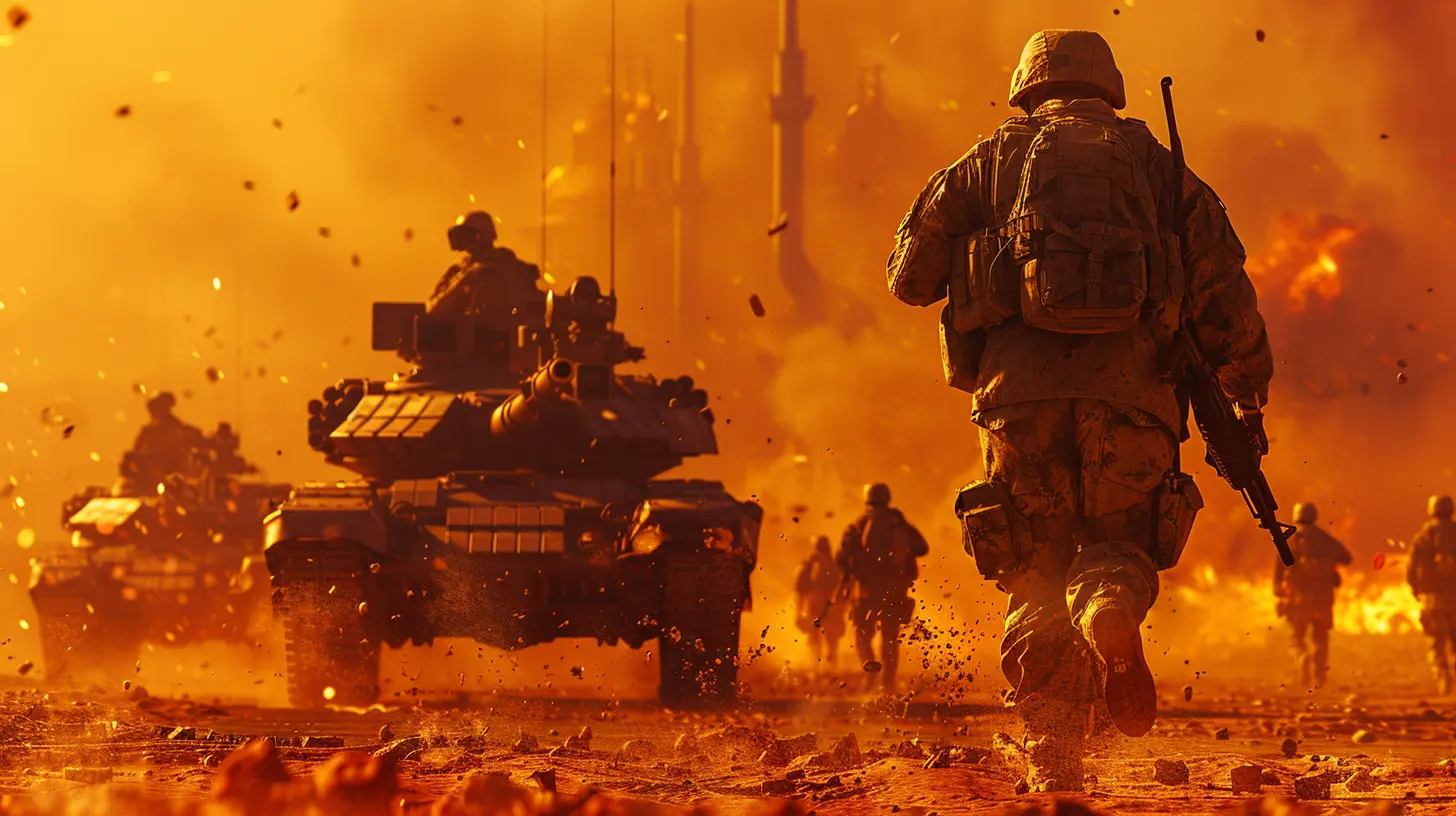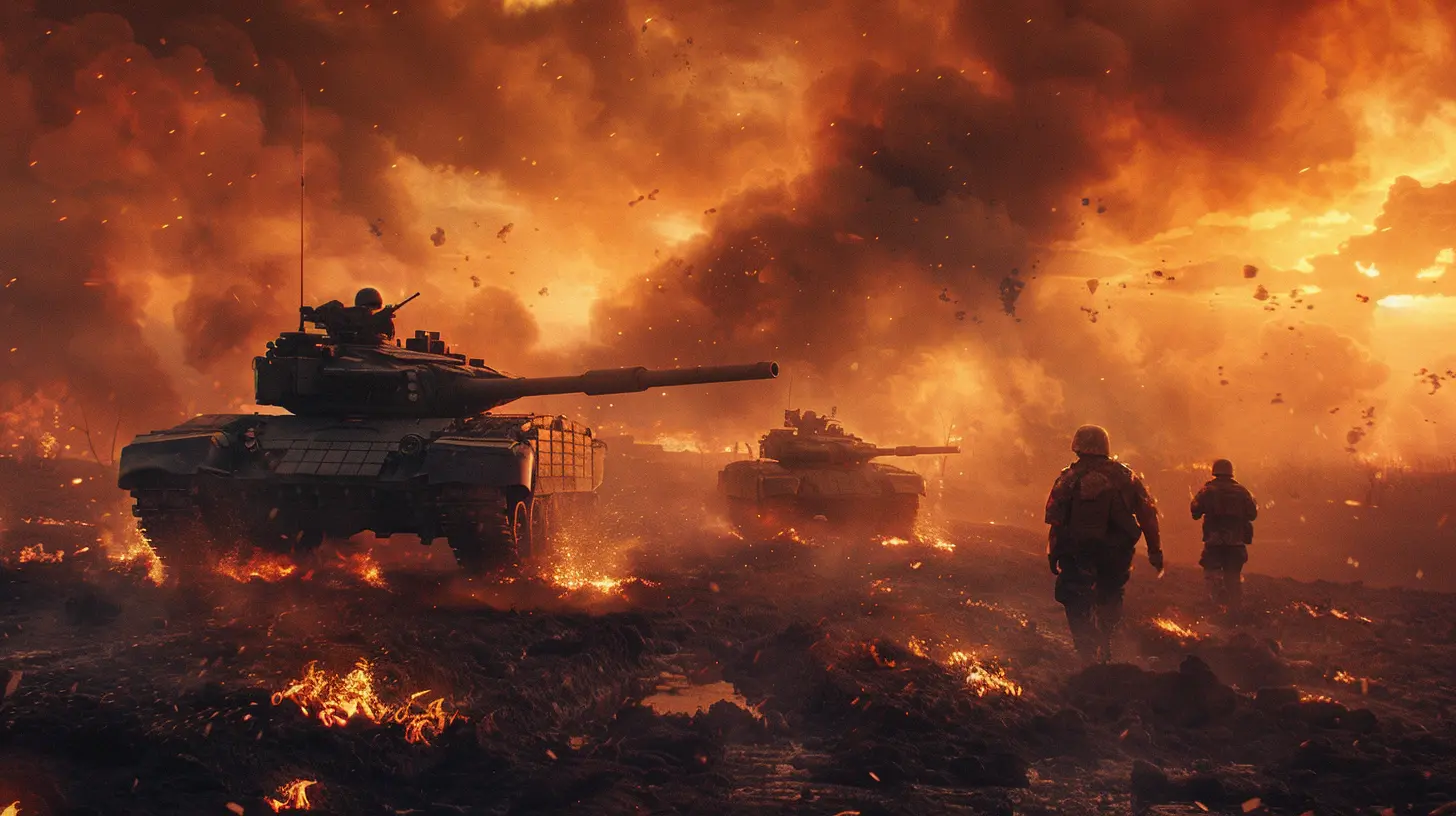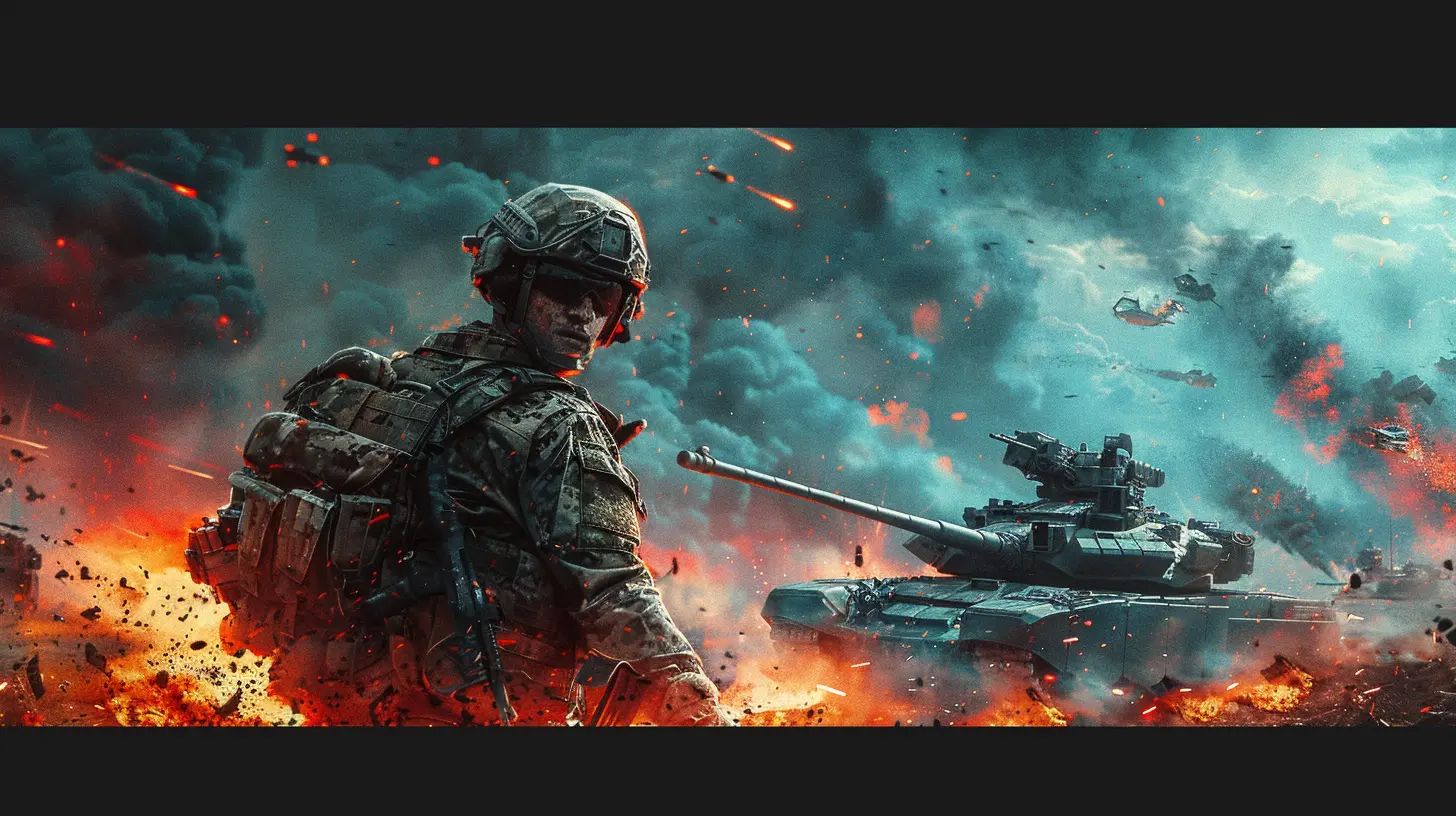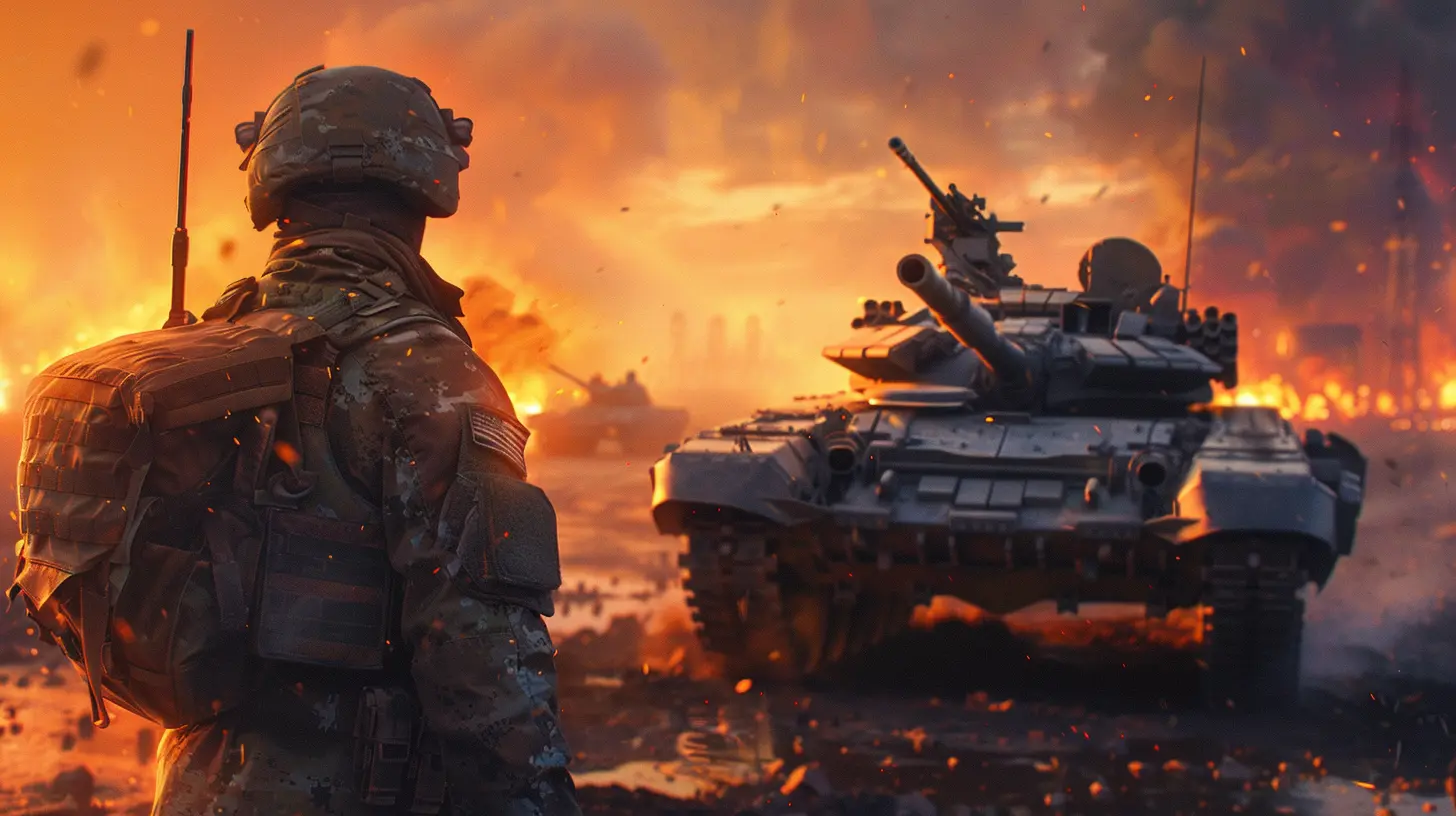The Psychology of War in Video Game Design
6 July 2025
Video games have been around for decades, and while they entertain millions of players around the globe, they’re also a reflection of complex human emotions, including our fascination with conflict. War-themed games, in particular, have carved out a massive niche in the gaming industry. But why are we drawn to them? Is there something deeper at play in their design? Let’s dive into the psychology of war in video game design and figure out why these games strike such a chord with players.

Why Are War Games So Popular?
Let’s face it: War games are some of the most played genres in gaming history. From historical recreations like Call of Duty and Medal of Honor to futuristic conflicts in Halo or Gears of War, these games never seem to go out of style. But what makes them so appealing? It’s not just the thrill of combat but the way these games tap into primitive human instincts.For one, conflict is hardwired into our DNA. Humans have always been drawn to competition, struggles for survival, and the idea of conquering. War games simulate those same emotions without the actual real-world consequences. They give players the chance to strategize, work as a team, overcome odds, and experience a rush of adrenaline all from the comfort of their couches.
And it’s not just about fighting. War games often include elements of storytelling, personal sacrifice, and moral dilemmas. These aspects make the experience more immersive and relatable.
So, the next time you find yourself sinking countless hours into a war game, don’t feel too guilty—it’s not just your love for action; it’s your biology at work.
The Role of Empathy and Emotional Connection
War games aren’t just explosions and flashy graphics. The best examples of this genre create emotional depth. Think about titles like Spec Ops: The Line—a game that isn’t just about shooting enemies but forces the player to deal with guilt, morality, and trauma.Game developers use clever psychological tricks to forge emotional connections. By putting players in the shoes of a soldier or a commander, games often nudge you to care about your squadmates or the civilians affected by the conflict. When a character you’ve fought alongside for hours suddenly dies, it hits harder than you expect, doesn’t it? That’s not by accident.
Emotions are one of the most powerful tools in game design. Developers use them to immerse players, and war games are a perfect playground for this. Fear, anxiety, triumph, sadness—it’s emotional whiplash, and we can’t seem to get enough of it.
The Allure of Strategy
Let’s not forget one key aspect of war games: strategy. Unlike run-and-gun shooters, many war games lean heavily on tactics and decision-making. Titles like Company of Heroes or Total War aren’t just about who has the fastest reflexes but who has the sharpest mind.Think of it like a giant chessboard. Every move you make has consequences. Will you send your troops into the open to secure that objective, or will you hang back to defend your base? These choices tap into our problem-solving instincts, scratching that itch we all have to outsmart others.
This strategic element isn’t just fun—it’s addictive. There’s a reason real-time strategy and tactical games have a loyal fanbase. People love the feeling of being in control, of orchestrating a grand plan and watching it unfold perfectly (or spectacularly backfire, if that’s more your style). 
Morality in War Games
But here’s the thing: War games don’t just focus on the adrenaline rush or tactical depth. They also delve into moral gray areas. And honestly? That’s where things get really interesting.Some games challenge players to think about the consequences of their actions. In This War of Mine, you’re not a soldier but a civilian trying to survive in a war zone. Suddenly, the focus shifts from killing enemies to making heartbreaking decisions: Do you steal from an innocent stranger to feed your child? Or in games like Spec Ops: The Line, players are forced to witness the horrors of their choices unflinchingly. Games like these blur the lines between hero and villain, showing that war is rarely black and white.
These moral dilemmas resonate with players because they mirror real-life complexities. They also make you reflect on what you might do in those situations. Would you take the high road, even if it’s harder? Or would you go to any lengths to survive?
The Immersion of Realism
Realism is another major driving factor in war game design. The best war games go to great lengths to replicate the sights, sounds, and experiences of combat. From hyper-detailed weapon models to authentic battle tactics, realism brings players closer to the action.Take Call of Duty: Modern Warfare (2019 reboot) as an example. The developers consulted military experts to ensure everything—from the way soldiers move to the sound of gunfire—felt authentic. And it works. Realistic elements make the game world more believable, which, in turn, sucks players in even deeper.
It’s also worth mentioning that newer war games are incorporating advanced artificial intelligence (AI), making enemies respond more dynamically to players’ actions. It’s not just about overcoming mindless opponents anymore; you’re up against enemies that adapt and react, making the experience feel way more lifelike.
The Role of Multiplayer in War Games
Now, what’s war without comrades? The multiplayer component of war games brings another layer of psychology into the mix. There’s something incredibly satisfying about working with a team, communicating strategies, and achieving victory together.Multiplayer war games tap into our social instincts. Humans are naturally wired to form groups and cooperate (even if it’s just to capture a virtual flag). Whether you’re teaming up with friends or going head-to-head with players across the world, that sense of community—or rivalry—fuels engagement.
On the flip side, competitive multiplayer can also bring out our inner warrior. The thrill of climbing the ranks, outsmarting opponents, and gaining prestige feeds into our need for accomplishment. Winning feels good, right? That rush of dopamine is why we keep coming back.
The Ethical Debate
Of course, not everything about war games is sunshine and rainbows. These games have often sparked ethical debates, especially when they portray real-world conflicts. Does glorifying war in games desensitize players to violence? Does it risk trivializing real-life suffering?Some critics argue that war games can romanticize violence and misrepresent history. Others point out that interactive experiences are more impactful than passive ones like movies or books, potentially leaving a stronger impression on players.
Developers are increasingly aware of this, and some are making efforts to address it. Many modern war games try to strike a balance, showing both the excitement of combat and the harsh realities of war. But the ethical questions remain—and they’re worth thinking about.
War Games and Player Identity
Finally, let’s talk about player identity. War games often let you step into roles you’d never experience in real life—whether it’s a soldier, a pilot, or even a commanding officer. This role-play aspect can be incredibly empowering, letting players imagine themselves as heroes (or antiheroes) in intense situations.But it’s not just escapism. These games can also serve as a form of self-expression. Are you the kind of player who charges into battle guns blazing? Or do you prefer to hang back and support your team? The choices you make in a war game can say a lot about how you see yourself—or how you wish to be seen.
Conclusion: Why We Keep Coming Back
At the end of the day, war games aren’t just about war—they’re about people. They tap into primal instincts, challenge us with moral questions, and immerse us in experiences that feel larger than life. Game developers use psychology as a lens to craft stories, mechanics, and emotions, ensuring we keep coming back for more.So, why are war games such a powerful force in gaming? Because they speak to something deeply human: our love for stories, our need for challenges, and our curious fascination with conflict—even when it’s safely contained in pixels.
all images in this post were generated using AI tools
Category:
War GamesAuthor:

Leif Coleman
Discussion
rate this article
2 comments
Amalia Anderson
Fascinating topic! How do developers balance realism and player engagement in war games?
November 30, 2025 at 4:16 AM

Leif Coleman
Developers often balance realism and player engagement by incorporating authentic elements of warfare while prioritizing gameplay mechanics that enhance enjoyment. They aim to create immersive experiences that reflect real-life complexities without sacrificing fun, often using narrative, visuals, and game design to achieve this equilibrium.
Zachary McFarlin
Interesting insights! Understanding psychology enhances game immersion and player engagement significantly.
July 16, 2025 at 2:44 AM

Leif Coleman
Thank you! Psychology indeed plays a crucial role in creating deeper connections and enhancing the overall gaming experience.


